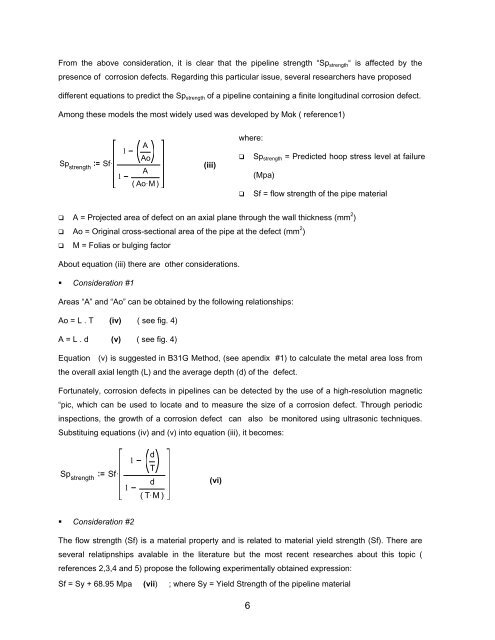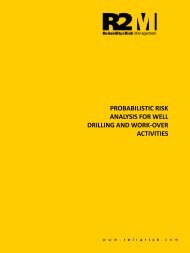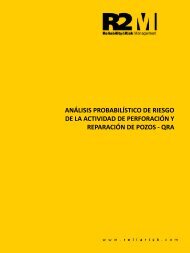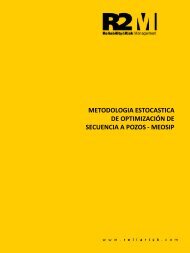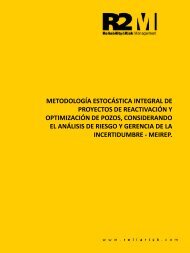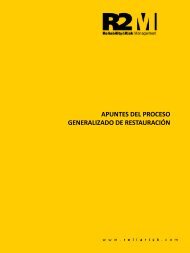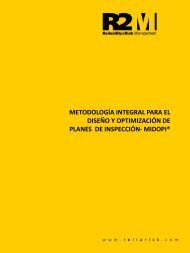Remaining Life of a Pipeline
Create successful ePaper yourself
Turn your PDF publications into a flip-book with our unique Google optimized e-Paper software.
From the above consideration, it is clear that the pipeline strength “Sp strength “ is affected by the<br />
presence <strong>of</strong> corrosion defects. Regarding this particular issue, several researchers have proposed<br />
different equations to predict the Sp strength <strong>of</strong> a pipeline containing a finite longitudinal corrosion defect.<br />
Among these models the most widely used was developed by Mok ( reference1)<br />
Sp strength<br />
Sf.<br />
1<br />
1<br />
A<br />
Ao<br />
A<br />
( Ao . M )<br />
(iii)<br />
where:<br />
<br />
<br />
Sp strength = Predicted hoop stress level at failure<br />
(Mpa)<br />
Sf = flow strength <strong>of</strong> the pipe material<br />
A = Projected area <strong>of</strong> defect on an axial plane through the wall thickness (mm 2 )<br />
Ao = Original cross-sectional area <strong>of</strong> the pipe at the defect (mm 2 )<br />
<br />
M = Folias or bulging factor<br />
About equation (iii) there are other considerations.<br />
• Consideration #1<br />
Areas “A” and “Ao” can be obtained by the following relationships:<br />
Ao = L . T (iv) ( see fig. 4)<br />
A = L . d (v) ( see fig. 4)<br />
Equation (v) is suggested in B31G Method, (see apendix #1) to calculate the metal area loss from<br />
the overall axial length (L) and the average depth (d) <strong>of</strong> the defect.<br />
Fortunately, corrosion defects in pipelines can be detected by the use <strong>of</strong> a high-resolution magnetic<br />
“pic, which can be used to locate and to measure the size <strong>of</strong> a corrosion defect. Through periodic<br />
inspections, the growth <strong>of</strong> a corrosion defect can also be monitored using ultrasonic techniques.<br />
Substituing equations (iv) and (v) into equation (iii), it becomes:<br />
Sp strength<br />
Sf.<br />
1<br />
1<br />
d<br />
T<br />
d<br />
( TM . )<br />
(vi)<br />
• Consideration #2<br />
The flow strength (Sf) is a material property and is related to material yield strength (Sf). There are<br />
several relatipnships avalable in the literature but the most recent researches about this topic (<br />
references 2,3,4 and 5) propose the following experimentally obtained expression:<br />
Sf = Sy + 68.95 Mpa (vii) ; where Sy = Yield Strength <strong>of</strong> the pipeline material<br />
6


